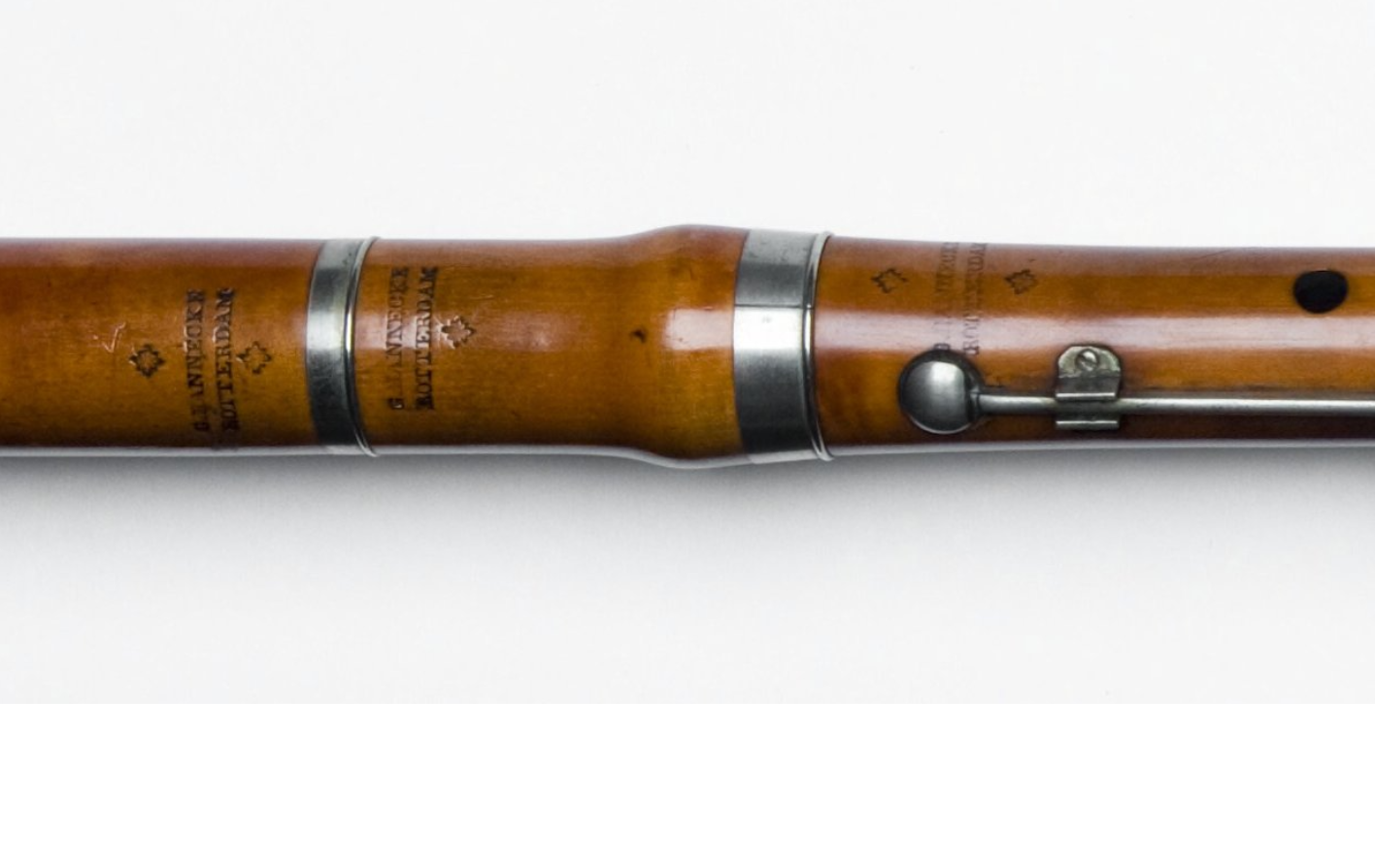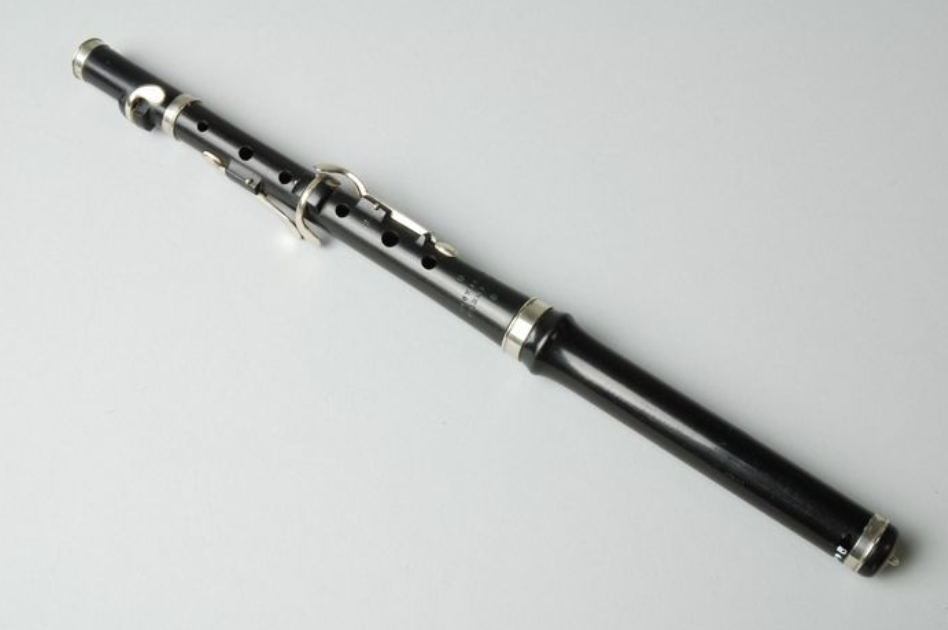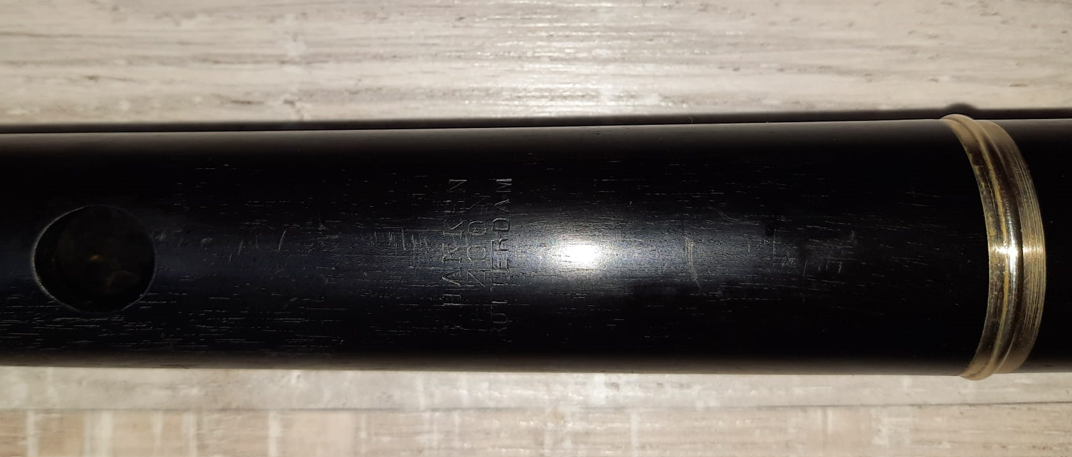The Hanken family workshop
Introduction
The Hanken family was a family of instrument builders who originally came from Germany. They moved to Rotterdam where their workshop flourished. They made instruments from the 16th throughout the 19th century.[1] Amongst other wind instruments, they made transverse flutes. This article focuses on their flutes. Hanken flutes are still played to this day. Unfortunately the original workshop was destroyed by bombardments in World War II.
The maker’s mark
The Hanken family name changed throughout history. Since they were originally from Germany. The family names ‘Hannieck’, ‘Hanken’ and ‘Hannecke’ were all used to indicate the same instrumentmakers, the first two being used for the older instruments, the latter for newer ones. When they moved to Rotterdam, the Netherlands, they most frequently used the name ‘Hanken’ since it’s a Dutch version of the German name. The instruments had their own stamp to identify it as one of the Hanken instruments. Their maker’s mark was the outline of a flower with eight petals. This stamp can frequently be found on all parts of the instruments. These stamps included their name and city like
“G. HANNECKE
ROTTERDAM”[1:1] as can be seen in the picture below.

The flutes
The Hanken instrument builders used the Böhm system for at least some of their flutes, which was common practice from about 1847 for some well-known flutemakers in England and France (such as Louis Lot) who bought the patent from Theobald Böhm. There are not many flutes left, at least flutes that we know of. Hanken & Zoon also previously made simple systems flutes with a different number of keys, and with different types of wood and metals. Many of their surviving flutes from the 19th Century display a great variety in constructive choices. This is both an example of the flourishing of different innovations in the constructions of the flute, and of the research and experimentation of the Hanken workshop at the time. There is one boxwood flute in St. Cecilia’s Hall in the United Kingdom, consisting of 4 sections. This flute has twelve keys, plus duplicate Bb (to A), and six finger holes. This flute is mostly made out of boxwood, but has German silver keys and a metal lined headjoint. [1:2] In the United States of America there is a flute with Boehm system in the National Museum of American History. The flute has a C foot and is made of grenadilla and nickel silver. The headjoint and keys are silver and the rest of the flute is grenadilla wood. The flute is stamped “G. HANKEN & ZOON \ ROTTERDAM” [2] In the museum collection of Museum Rotterdam, The Netherlands, is a piccolo.

History
The first flute maker of their dynasty who moved to Rotterdam, The Netherlands, was Gerhard Hannecke (1809-1888). He moved there with his uncle, who was also called Gerhard Hannecke. He came from Oldenburg to Rotterdam to work there as a dentist and instrument maker.[1:3] After moving to Rotterdam he legally changed his name into ‘Hanken’. From 1837 he concentrated on his own business and in 1872 his son Gerhard Johann Friederich Hanken (1846-1935), joined the company and took over the work. At the age of 81, he retired in 1927 and was succeeded again by his own son Henri Adriaan Hanken (1877-1948). As already mentioned, the workshop was destroyed in the war in 1940. Because of this, the existence of the Hanken company in the Netherlands came to a sudden halt after a good century. [3]

Gerhard Hannecke, son of Friederich Hannecke and Gebke Kaper, was born in 1809 in Wiefelstede, Niedersachsen. In 1827 he moved to Rotterdam with his uncle. There, he met a Dutch woman from Rotterdam and he got married to Henriette Adriana Jonkheijm (1822-unknown) in 1843. They had four children together: Anna Margaretha (1844), Gerhard Johann Friederich (1846), Jakob (1849) and Henri Antoine (1854). The second child (who was their first son) became Gerhards’ successor.[4]
Gerhard Johann Friederich Hanken (the name changed from Hannecke to Hanken after their move to Rotterdam) married Dorothea Elizabeth Dicke (1847-unknown) in the year 1872. Just like his parents, they also had four children. Emma Helena Maria (1873), Gerhard Johann Friederich (1874-1875[5]), Selma (1876) and Henri Adriaan (1877). There is almost nothing to be found about their first three children. We do know that their first son Gerhard Johann Friederich died when he was just a baby, which is why Henri Adriaan (who was technically their second son) inherited the company. [6]
Henri Adriaan Hanken was the last instrumentbuilder of the lineage. In 1927 he married Emma van der Hoeven (1897-unknown). As far as we know, they never had any children to inherit the company G. Hanken & Zoon. Sadly, during Henri’s life, the workshop and with that the company got destroyed by nazi-Germany’s bombs.[7]
Genealogy problematics
Important to note: Gerhard Hannecke (1809-1888) had a brother called Carl Gerhard Heinrich Hannecke (1824-unknown). He also moved to Rotterdam and married Johanna Antonia Pluijm (1823-unknown) in 1852, and together they had no less than ten children. One of their sons, born in 1858, was called Henri Adriaan Hanken (1858-1943)[8], who has exactly the same name as the last instrument builder in the family, mentioned above. This seems to have caused some problems: not all sources agree on which person the last Henri Adriaan Hanken was. From the information derived from “William Waterhouse, The New Langwill Index, London 1993, S.160”, which is a dictionary of musical wind-instrument makers and investor, it can be assumed that Henri Adriaan Hanken is in fact the son of Gerhard Johann Friederich Hanken and Dorothea Elizabeth Dicke.
Further research

These are pictures of a G. Hanken & Zoon flute currently in private use. The makers mark is visible in the picture above. This flute does not have a flower stamp, only the name and city: G. HANKEN \ ROTTERDAM. This is a simple system flute from circa 1850. It has 8 keys, a tuning slide and a C foot.

References
-
https://collections.ed.ac.uk/stcecilias/record/96157 ↩︎ ↩︎ ↩︎ ↩︎
-
https://americanhistory.si.edu/collections/search/object/nmah_606231 ↩︎
-
https://vanzoelen.eu/wp-content/uploads/2019/12/rohrblatt-saxophone-aus-den-niederlanden-3_2019.pdf ↩︎
-
https://rotterdam.voorouder.nl/getperson.php?personID=I249395&tree=voorouders ↩︎
-
https://www.genealogieonline.nl/zoeken/?q=hanken&vn=Gerhard+Johann+Friederich&pn= ↩︎
-
https://rotterdam.voorouder.nl/getperson.php?personID=I189070&tree=voorouders ↩︎
-
https://rotterdam.voorouder.nl/getperson.php?personID=I99700&tree=voorouders ↩︎
-
https://rotterdam.voorouder.nl/getperson.php?personID=I397821&tree=voorouders ↩︎